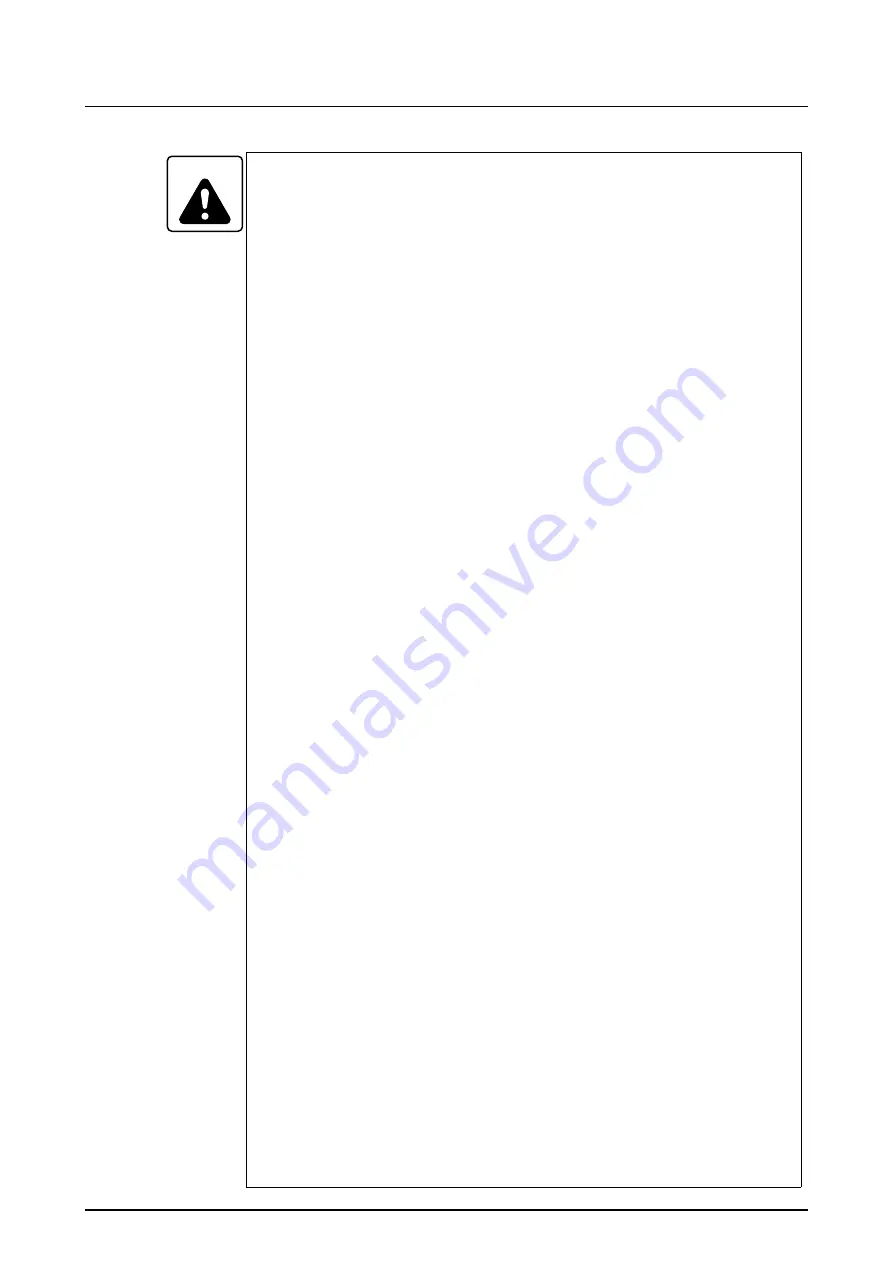
FOR SAFE OPERATION -29-
SO-NL-B9E/O
WARNING
11.
When clamping a workpiece in a 3-jaw chuck, the workpiece
(finished faces) cannot be clamped stably if contact is only made at
three points. If a workpiece is machined while clamped in this very
unstable way, it may fly out due to cutting resistance, causing
serious injuries or damage to the machine.
The workpiece must be clamped at six points, or with face contact
(jaws shaped to the shape of the workpiece).
12.
Do not use top jaws with a serration of a different pitch from that of
the master jaws. If such top jaws are used, the serration may be
damaged when the workpiece is clamped in the chuck due to
insufficient length of the areas of engagement. If the spindle is
rotated after such damage has occurred, the workpiece and top jaws
will fly out, causing serious injuries or damage to the machine.
13.
Do not use excessively heavy jaws. If the spindle is rotated with top
jaws heavier than the standard soft or hard jaws fixed to the chuck,
the loss of chuck gripping force due to centrifugal force will be
larger than the loss seen with standard chuck jaws; the loss increase
is equal to the increase in centrifugal force corresponding to the
difference in mass between the standard and heavy jaws. If the
workpiece is machined under such conditions, it will fly out, causing
serious injuries or damage to the machine.
14.
Always use the T-nuts specified by the chuck manufacturer. If the
bolts used to mount the top jaws cannot be screwed a sufficient
depth into the T-nuts, the T-nuts may break. Conversely, if the bolts
protrude past the bottom faces of the T-nuts, it will not be possible to
secure the top jaws by tightening the bolts. If one of these problems
exists while the spindle is rotating, the workpiece and top jaws will
fly out, causing serious injuries or damage to the machine.
15.
Clamp workpieces at the center of the master jaws' stroke or within
their appropriate stroke range. If a workpiece is clamped in the
chuck with the jaws positioned near the stroke end it will not be
possible to clamp the workpiece securely and it may slip and fly out
of the chuck as a result of impact during cutting, causing serious
injuries or damage to the machine.'
16.
The machine user must take responsibility for setting the rotational
speed of the chuck.
The allowable maximum speed of the chuck specified in the
instruction manual or catalog prepared by the chuck and cylinder
manufacturers is intended for reference purposes only. It will not
guarantee safety under all operating conditions. The appropriate
speed is influenced by the shape and mass of the top jaws, the
chuck gripping force, the workpiece dimensions and shape, cutting
force, and how the chuck is maintained and inspected. The machine
user has responsibility for all these factors. If the spindle is rotated
too fast under the given conditions the workpiece will fly out,
causing serious injuries or damage to the machine.












































